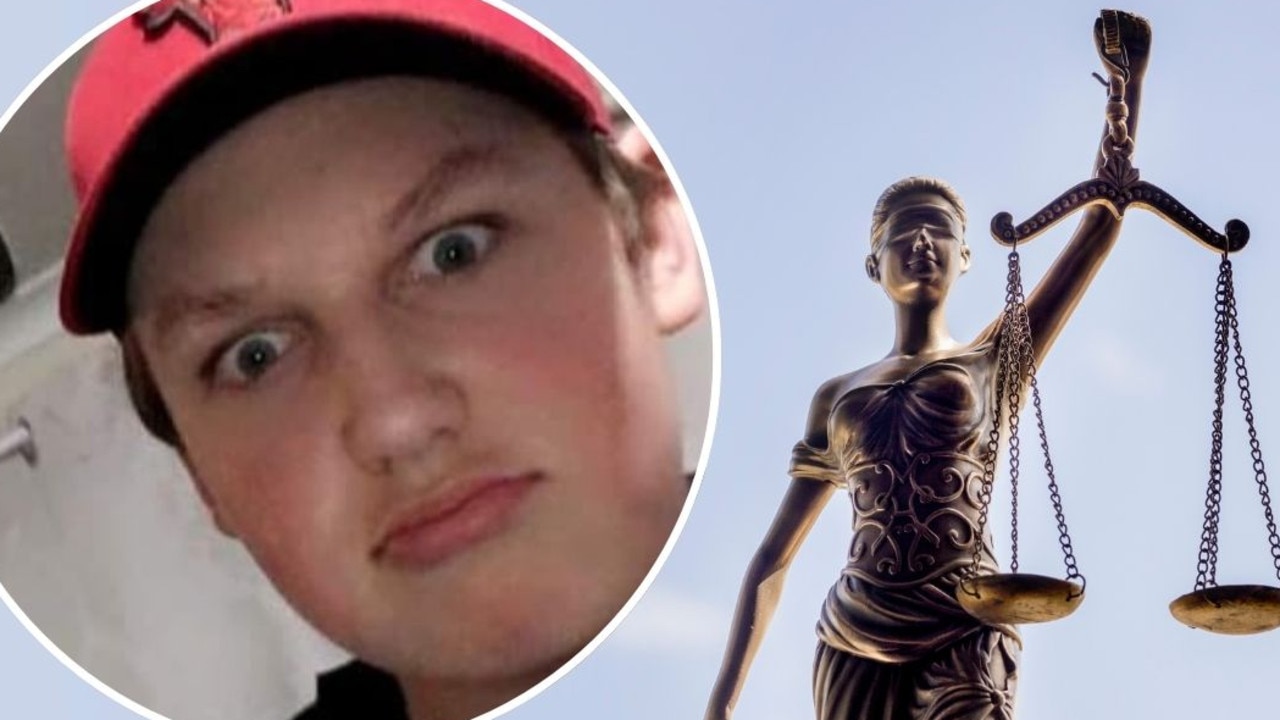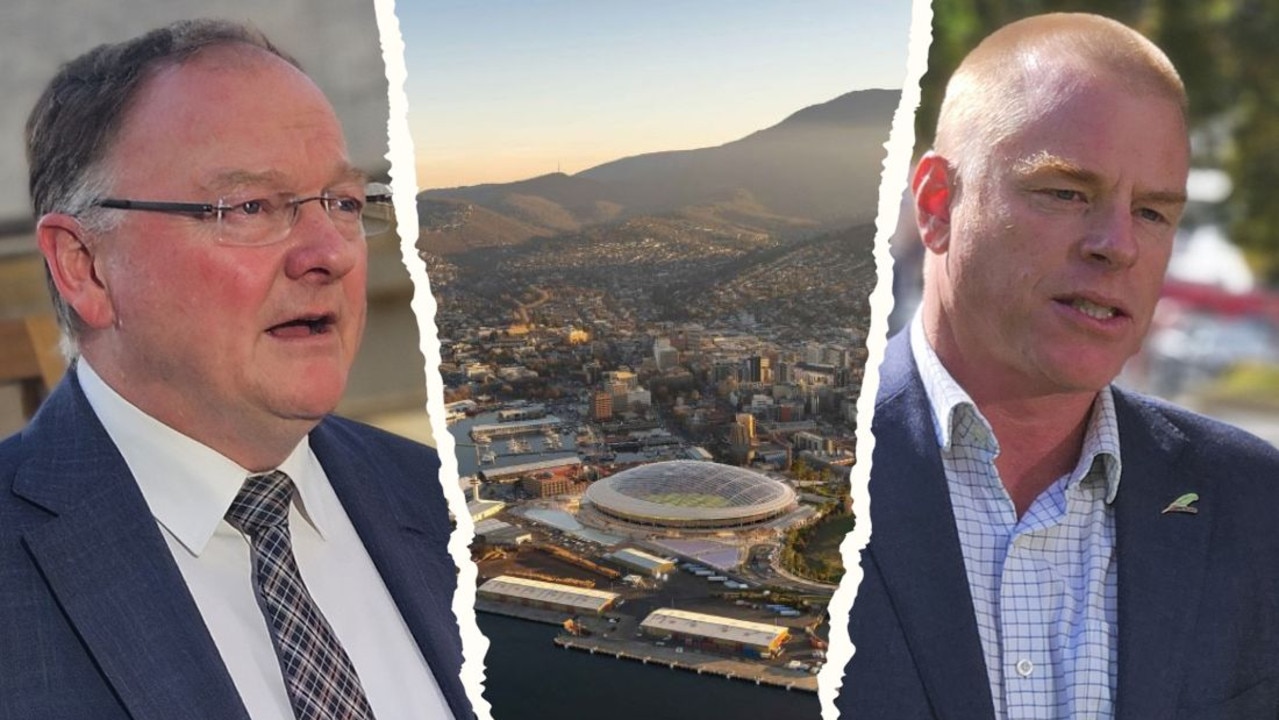’Just a noise can trigger her’: Trauma led to a life on the street for couple Neil and Chloe sleeping rough in Hobart
“I don’t feel safe anymore”: Couple sleeping rough in Hobart says more support is needed for those experiencing crises. How they ended up sleeping in a tent through the cold winter >>
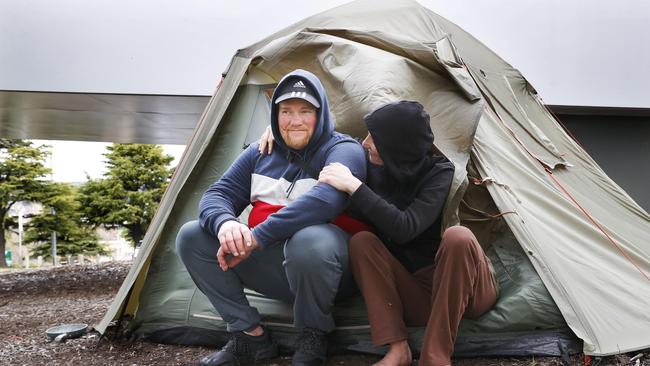
Tasmania
Don't miss out on the headlines from Tasmania. Followed categories will be added to My News.
Dual health and housing crises in Tasmania are sending more and more desperate people to the cold streets. At the start of national Homelessness Week the Mercury went and spoke to a couple living in a tent in Hobart this winter.
Neil is in his early 40s and has been sleeping rough since he was traumatised through his work as a truck driver.
“I was tow truck driving and, all the fatalities really took their toll on me,” Neil said outside his small tent under the walkway near the Hobart Aquatic Centre.
He said he made “bad life choices” by turning to drugs after his trauma.
Neil said he is supposed to be in treatment for his cancer, but is unable to access treatment while homeless.
He is concerned about safety sleeping rough with his girlfriend Chloe.
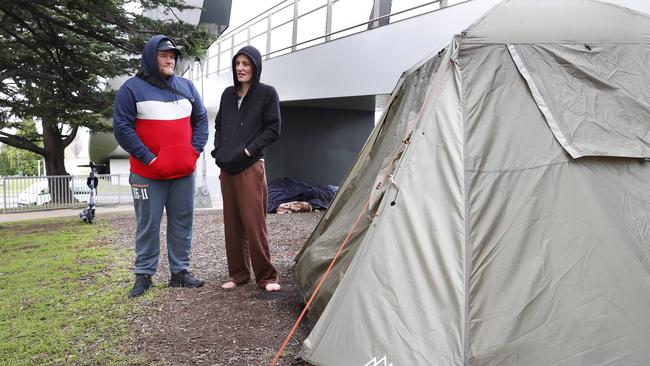
Chloe is 32 and suffers from mental health issues from severe trauma, which makes it difficult for the couple to live in society.
“Getting her help just doesn’t happen,” he said.
“Just a noise can trigger her.”
The couple have been sleeping in tents in Tasmania for several months, picking spots that have CCTV cameras for a bit of protection.
“We are starting to get harassed by the local young people now,” Neil said.
“They are stealing stuff from our tent.
“I don’t feel safe anymore,” he said.
Chloe said she was desperate for food and unfortunately had to turn to stealing.
“It’s getting hard to the point where we can’t even get food now.
“If I get caught stealing food again I’ll probably go to jail,” she said.
“I can’t ask anyone for help, no one will help, what am I supposed to do?”
She said Neil had a “heart of gold”, and would share groceries with other homeless people around Hobart when he had the means.
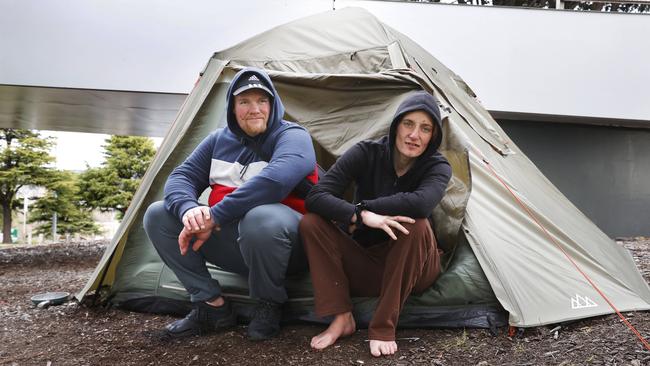
“He doesn’t even know them but will give them food or a blanket, he’d take the shirt off his own back,” she said.
After years of struggling to find help for herself Chloe has some practical ideas for combating the homeless crisis – an organisation she thinks should be called On Your Feet.
She said people needed help to organise court dates, dentist appointments, mental health appointments, laundry and “all sorts of stuff people can’t do” for themselves when they are in crisis.
She said people who have bad mental health issues get turned away from the bigger charitable organisations and they need dedicated help.
“On Your Feet would help all the people that have bad mental health or bad drug issues or alcohol issues because they get turned away. It’s not fair.”
Chloe said some organisations seem to prefer “easier” cases.
“They will see someone and say no we will help this other person because this is easier when that person needs more help,”
She said that treatment could exacerbate mental health issues and could be dangerous for the person and others to be ignored.
“Then they end up in jail, or even worse,” she said.
Neil and Chloe are just two faces in the growing homeless crisis, with “tent cities” popping up full of families from Hobart to Smithton and almost every bigger town in between.
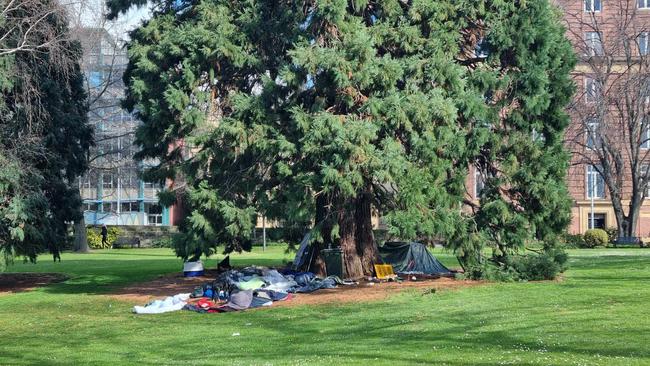
This week the spotlight is on the pressing issue of homelessness impacting a growing demographic of Australians with national homelessness week.
Homelessness Week is designed to bring awareness to and build government support to tackle homelessness.
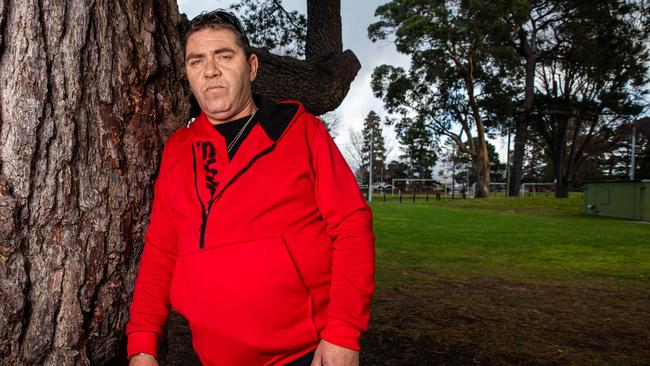
Hidden nature of youth homelessness
Tyson Montgomery knows as well as anyone else the harsh and stark realities of youth homelessness.
During his 20s, Mr Montgomery spent four years sleeping rough on the streets and couch surfing.
“It’s really hard because when you’re couch surfing, you can only be at a place for a certain time; sometimes it’s two weeks, sometimes it’s a week,” he said.
“There were in-betweens when I was on the street, and then some of them were very unsavoury places to stay.”
Mr Montgomery now works for the Salvation Army and is part of the team organising the Off the Couch event that is taking place on Wednesday at the Rosny Skate Park as part of National Homelessness Week.
Run by the Clarence City Council in conjunction with other service providers and organisers, the event will offer food, hot drinks, music, and activities, including a skateboarding competition and hundreds of dollars’ worth of prizes and giveaways.
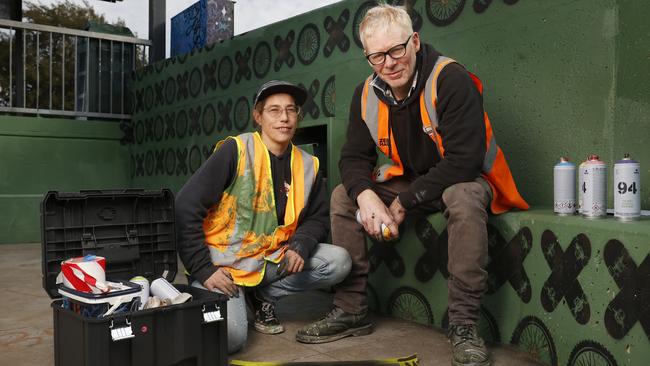
The Off the Couch event is now in its third year and Clarence Mayor Brendan Blomeley said homelessness was an ever-present result of the rising cost of living and increases in rent, property prices, and mortgage rates.
“Clarence sadly is not isolated from homelessness, and there are some obvious reminders of people’s circumstances around our city, however, youth homelessness is often hidden,”
Mr Blomeley said.
“This event has proven to be one which both brings people together and highlights the issue
around housing insecurity.
“By involving young people in the conversation through initiatives like Off the Couch, we
hope to bring the problem of youth homelessness out into the open.”
Mr Montgomery said the issue was a big one to tackle and needed a multifaceted approach.
“At the moment, a lot of kids don’t have anywhere to go where they feel safe.
“I think we need to have places where kids can feel safe and can stay without being threatened, ridiculed or judged.”
He also believed that there needed to be more activities and other forms of non-housing help for young people sleeping rough.
“From all the kids that I see and the kids that I speak to, you see them every day out there in Hobart just hanging around the streets with nothing to do.
“The aim of Off the Couch is to help young people to give them knowledge about homelessness and these other things associated with it.”
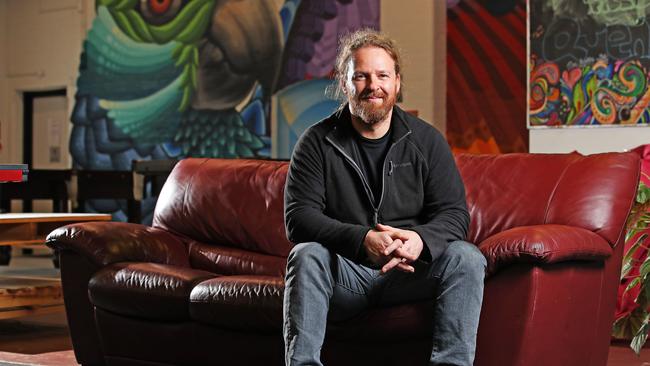
Homelessness advocates want ‘Radical Changes
Hobart City Mission’s Safe Space is so full on most nights that some people sleeping rough do not bother to ask the staff at the crisis accommodation if they can stay there because they already know the answer is often no.
“Most nights, we are at capacity, and most nights we will have people we know are still looking for a place to sleep,” Hobart City Mission Housing Services Program Manager Ewan Higgs said.
“I was talking to some other staff the other day, and the sad reality is that we’re actually seeing some people coming through again that we saw four years ago when we first opened.”
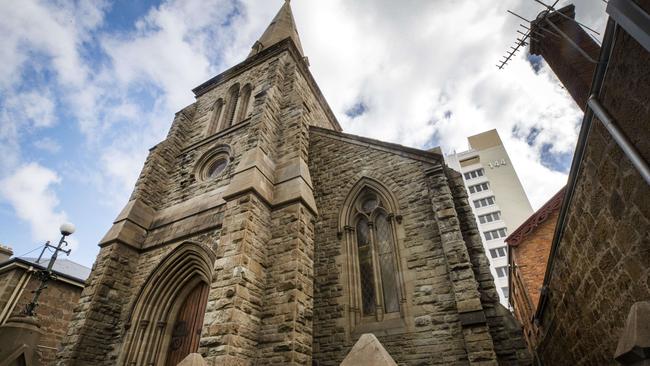
Mr Higgs said it was “pretty demoralising” to see it happen.
“I think about what change we are trying to bring and what difference we are making.
“It’s great that we can make that really immediate, short-term difference for someone; we get you in, we get you off the street, we get you warm with proper beds, and somewhere safe and comfortable to sleep and get food.
“But what are we achieving from a long-term perspective, given we see people come back through and cycle back through homelessness?
“It seems to be a repetitive pattern among far too many people.”
The Hobart Safe Night Space, located at the former Davey Street Congregational Church, is accessible only by referral and can accommodate up to 35 people.
Mr Higgs said he believed there was not enough emergency accommodation in Hobart.
“People are just making do sleeping in tents. We see people under the bridge all the time.
“There have been periods where it became really visible, but the encampments will move around.
“People are looking for somewhere they feel safe to pitch a tent because it’s not just single people that are unfortunately affected.
“Sometimes there are children, you might see couples, and safety becomes the biggest thing.
“People will move around and go wherever they feel safe.”
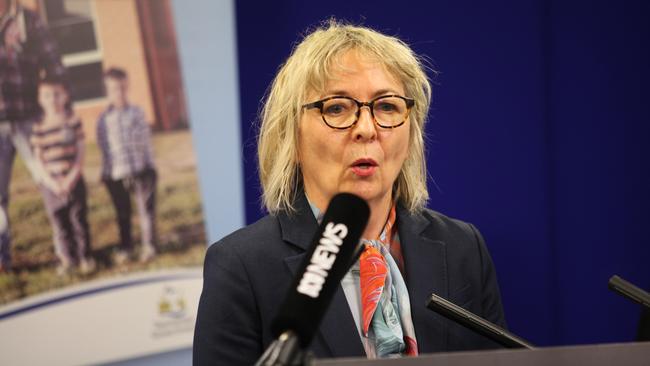
Shelter Tas CEO Pattie Chugg said the cost of living pressures and the rise in rents comparable to incomes meant that rates of homelessness and housing stress in the state were on the increase.
“At the 2021 Census, a total of 2,350 people in Tasmania were homeless, up from 1,622 in 2016,” Ms Chugg said.
“That’s an additional 728 Tasmanians experiencing homelessness, with the total increasing 45% in the five years since 2016.
“From having the lowest rate of homelessness of all states and territories in previous Census years, Tasmania now has the fourth highest rate of people experiencing homelessness, at 42.1 per 10,000.
“This shocking trend is moving in the wrong direction.”
Ahead of National Homelessness Week, Mr Higgs said the approach to the issue needed to change.
“I think we need to start making some pretty radical changes to homelessness and how to look and resolve it in Tasmania.
“It’s not just about building more and more houses and creating broadacre estates.
“It’s about considering what we build, where we build, the style of housing, and that we’re giving enough adequate choice of people because - to me - they’ll feel safe.”



